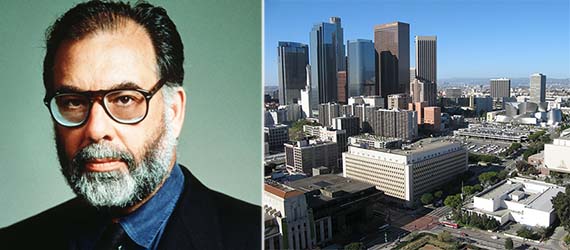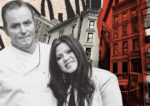Trending
This month in real estate history: Francis Ford Coppola hosts a garage sale, Rodeo Drive pioneer dies … and more

In this monthly column, The Real Deal takes a dive into L.A.’s storied real estate history.
March, 1984: Francis Ford Coppola holds garage sale
Film director Francis Ford Coppola raised $200,000 in an auction of movie memorabilia and camera equipment at Zoetrope Studios, after the studio itself was sold at foreclosure auction, the L.A. Times reported 33 years ago this month.
A Coppola spokesperson told the Times that the auction was held to “get rid of stuff not worth moving” to the new headquarters in San Francisco, rather than as a way to earn money for the troubled studio.
The most heated bidding war was for replicas of Las Vegas hotels used for the opening credits of a $26 million box-office flop “One From the Heart,” the Times said. For the dirty leather jacket worn by Matt Dillon in “The Outsiders,” a teenage fan paid $375. A denim jacket of the same provenance fetched $175.
Just four years prior, in 1980, the “Apocalypse Now” director had unveiled his new studio at the corner of Santa Monica and Las Palmas Boulevard and likened the “hunk of Hollywood” to a small but flourishing winery.
Zoetrope’s financial woes became apparent after “One From the Heart” fizzled in 1981 and the studios fell into foreclosure. Real estate investor Jack Singer, who’d previously financed the film, eventually bought the studios for just $12.3 million in a court-ordered foreclosure auction.
“I’m terribly excited,” Singer, the head of Darion Development Corp. told the Times following the auction. “I’m also surprised at the bidding. I thought it would go for between $18 and $20 million.” By comparison, the nearby former Goldwyn studios of comparable size had sold for $30 million three years prior.
The 60 year-old facility, one of the oldest studios in Hollywood, formerly housed Hollywood General Studios, and Hollywood Jasper Studio, where silent film stars Harold Lloyd and Mary Pickford once worked.
Last month, The Real Deal reported that Hudson Pacific Properties would acquire the same facility at the corner of Santa Monica and Las Palmas Boulevards, now called Hollywood Center Studios, for $200 million.
March, 1995: Donald Tronstein, “mayor” of Rodeo Drive, dies at age 60
Donald Tronstein, who was nicknamed the unofficial “mayor of Rodeo Drive” for his work in improving the Beverly Hills shopping strip, died at age 60 of a heart attack, the L.A. Times reported 22 years ago this month.
Along with Fred Hayman and other prominent Rodeo Drive merchants and landlords, the former Coldwell Banker & Co. vice president was a booster for the shoppers’ paradise, which described itself that year as “Gold Paved Drive.” He was one of the original founders of the Rodeo Drive Committee.
Another Rodeo Drive pioneer, Herbert Fink, died last month aged 93. He opened a luxe boutique there in 1969, well before the strip became synonymous with high fashion.
March, 1965: Long-awaited Bunker Hill skyscraper breaks ground
Several hundred dignitaries watched on from under a white-fringed canopy as ground was broken for what was to be Southern California’s tallest building, the L.A. Times reported 52 years ago this month.
When the bulldozer tore into the blacktop of the temporary parking lot where the razed Monarch Hotel once stood, it marked the end of nearly 18 years of planning for the long-delayed Bunker Hill Urban Renewal Project.
Of 1,300 urban renewal projects in 800 cities across the U.S., none had been tied up longer by legal delays than the Bunker Hill plan, the Times wrote. Among the legal hurdles was a building height ordinance, which by law decreed the tallest building in the city to be the 32-story City Hall. The legislative changes pushed through for the large-scale slum clearance project created a dense zoning area, which eventually lead to a skyscraper building boom in the 1980s.
The 40-story tower, the first skyscraper to be built as part of the project, was designed by the noted firm Albert C. Martin and Associates and was slated to cost $30 million.
The building was constructed on a parcel acquired from the city’s redevelopment agency by the Connecticut General Life Insurance Co. of Hartford for just over $3 million.
Today, the property is known as the Union Bank Plaza building and is still among the tallest in Los Angeles.




